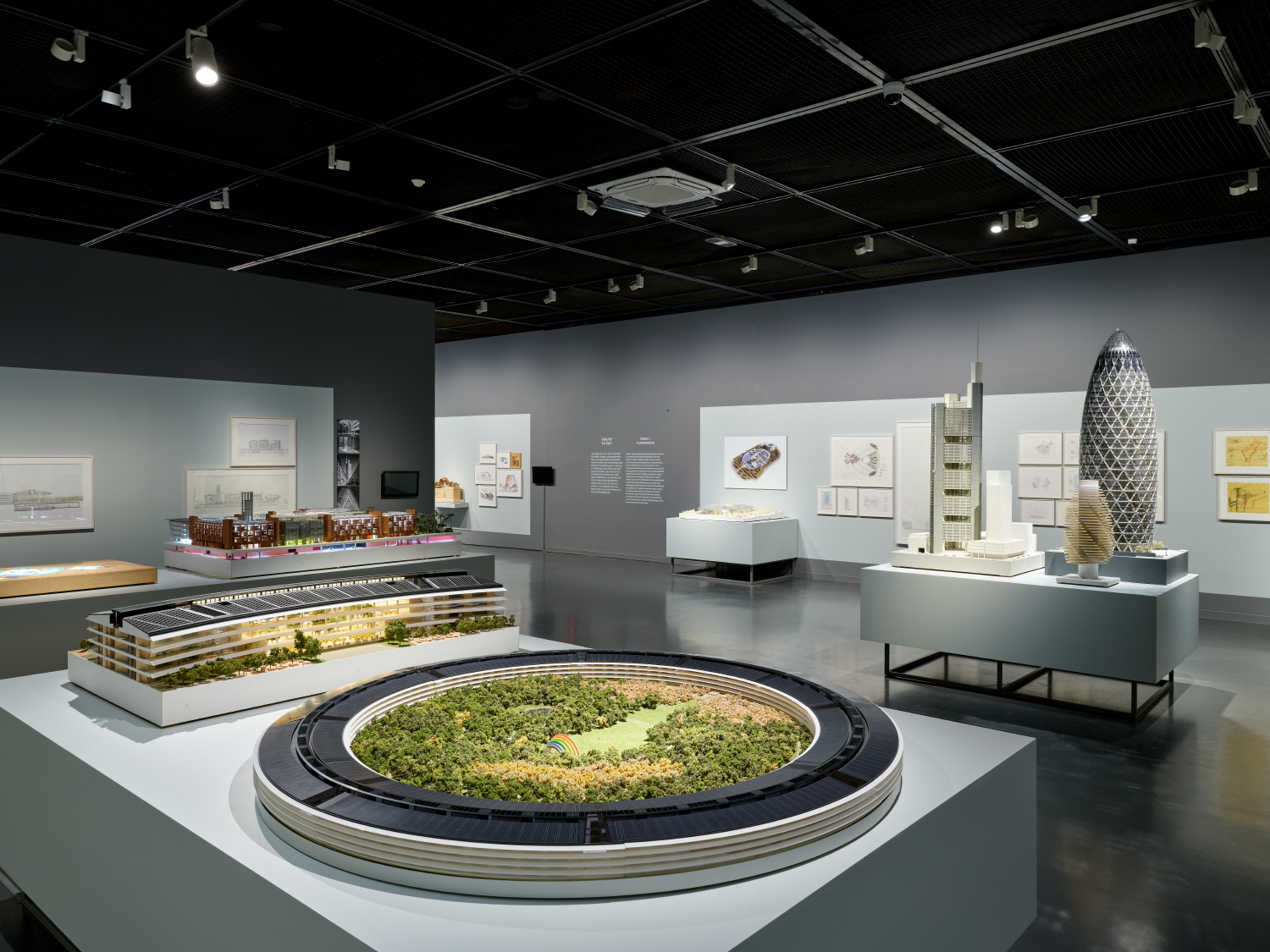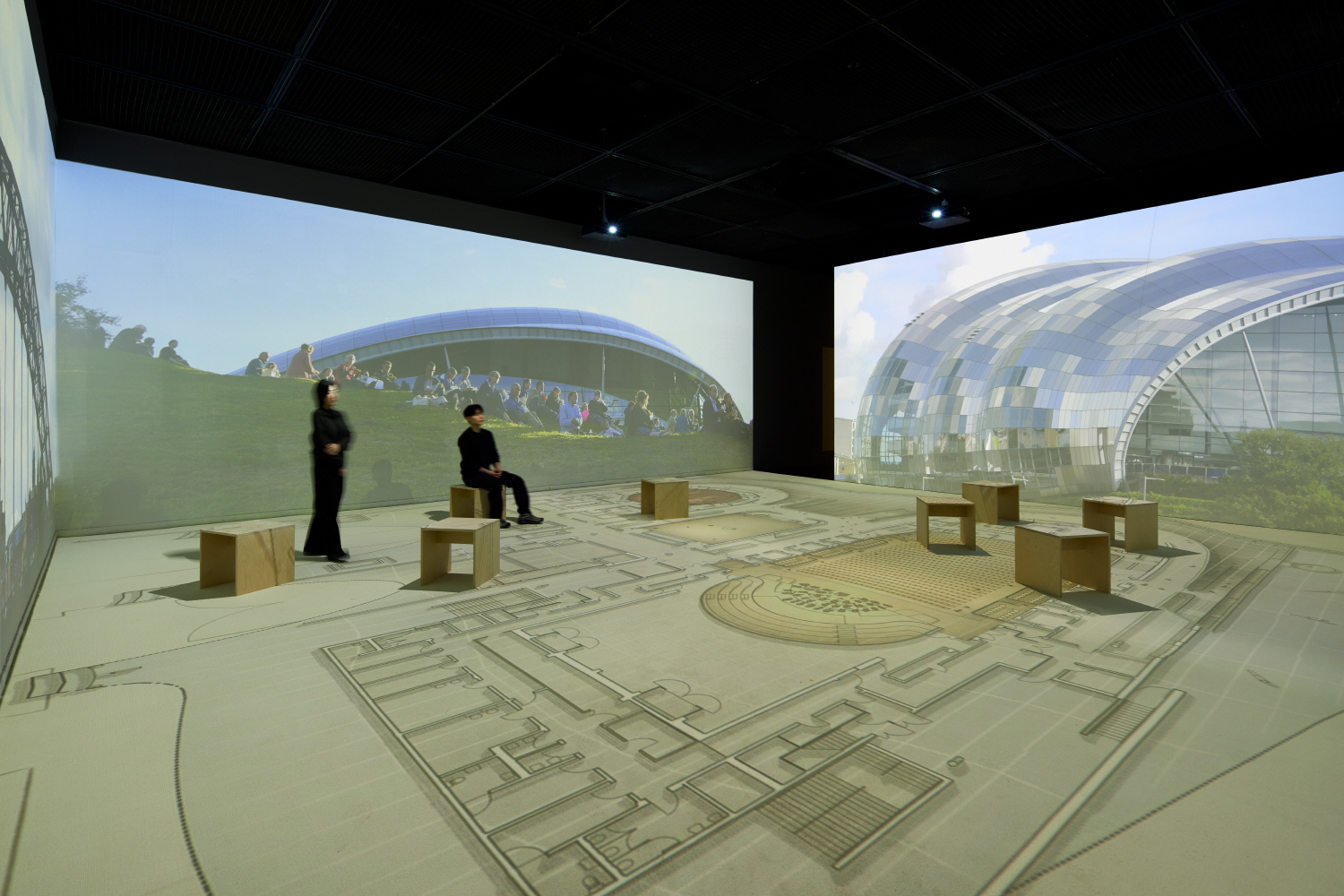SPACE July 2024 (No. 680)


Exhibition views of ‘Future Positive: Norman Foster, Foster + Partners’ _Images courtesy of Seoul Museum of Art / ©Lim Janghwal
The exhibition, ‘Future Positive: Norman Foster Foster + Partners’ will be on show at the Seoul Museum of Art’s Seosomun Main Branch until July 21. This exhibition is the first to reflect the exhibition themes of ‘architecture’ and the institutional theme of ‘connection’ chosen by the museum in preparation for the remodeling of its main building. It explores the works of Norman Foster, a Pritzker Architecture Prize winner and a representative of high-tech architecture, and of his firm Foster + Partners under the theme of ‘Future Positive’, divided into five sections. It is an extensive and detailed retrospective exhibition traxcing their journey from the 1960s onward, featuring more than 300 pieces, including architectural models, drawing archives, and videos.
The first section, ‘Introduction to Sustainability’, explores the sustainable qualities inherent to Norman Foster’s architecture. Since the 1960s, Foster has been committed to sustainable architecture, laying the foundations for eco-friendly buildings through his collaboration with Buckminster Fuller, an architect and futurist, in creating better environments with minimal resources.
His guiding architectural concepts are dramatically revealed in buildings with historical significance. In the section ‘Culture + Retrofit’, he proposes Retrofit, an approach that adds contemporary interpretations to old buildings, connecting past spaces with the present. The British Museum Great Court and the Berlin Reichstag are prime examples of the Retrofit concept.
‘Wellbeing + Technology’ introduces Apple Park in Cupertino, California, a project that typifies Foster’s architectural philosophy through its meticulously designed internal environment and energy usage strategies. His projects, such as the HSBC Building in Hong Kong, focus on creating comfortable environments by thoroughly researching the culture and climate of the region and actively incorporating new technologies.
Foster’s architecture, which promotes a positive relationship between users and buildings, has also been applied to urban- scale projects. According to Foster, the mission of design is to encompass the complex intertwined socio-economic, and environmental issues as one integrated task. The section ‘Public + Placemaking’ explores how users with diverse purposes can connect and build relationships in spaces like London’s Stansted Airport and Trafalgar Square.
His architecture ultimately looks to the future rather than the present. The final section, ‘Future’, features projects like the lunar habitat and Mars habitat projects in collaboration with the European Space Agency (ESA) and National Aeronautics and Space Administration (NASA). These projects, conducted with experts in fields such as architecture, social anthropology, mathematics, and environmental engineering, imagine a future where humanity coexists with different environments.
In the press conference held prior to this exhibition, Foster + Partners described Norman Foster’s architectural philosophy as informed by ‘quality and detail’ and ‘consistent innovation’. True to their word, Foster’s architecture elaborates its meaning across every aspect, down to the design of a door handle, considering user experience, while also showing a forward-thinking attitude by applying new technologies to buildings. Connecting the past and present, and further extending their vision into the future, his architecture always envisions a positive future.





